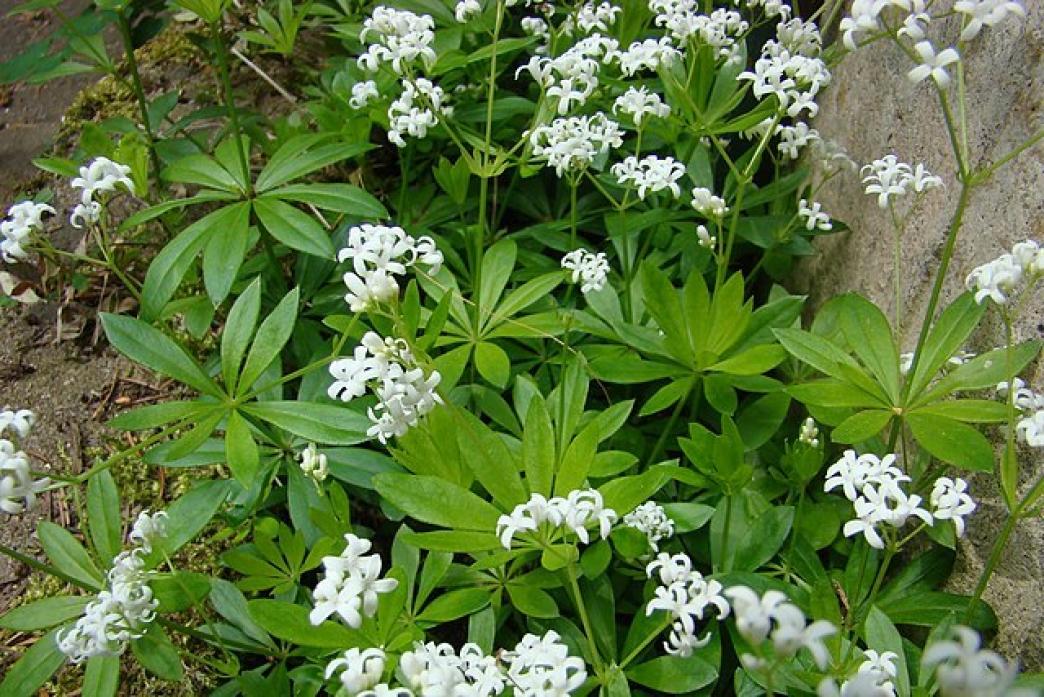
Sweet Woodruff Asperula odorata, or Galium odoratum
SWEET woodruff is a small, creeping perennial plant of the bedstraw family.
This family includes lady’s bedstraw, with its lovely yellow flowers, which can be seen on the Upper Demesnes in late summer, and also goose grass - or cleavers - which can be found almost anywhere (and particularly, unwanted, in your garden), and the magnificently named quinancywort, so called because it was said to cure quincey (or tonsil abscesses).
Woodruff itself is only about ten centimeters high. The square-shaped stem bears whorls of six to eight dark green leaves which give the appearance of a chorister's old-fashioned ruff.
It can survive the winter, but appears in strength in spring when the branched rhizomes spread and quickly form further shoots to create a compact colony. By late spring each stem is topped with star-shaped six millimetre diameter flowers of the purest white.
These flowers are sweet scented, hence the specific title of odorata, and attract flies and bees.
The plants can be abundant in damp, dark woodland places and can even be found up to 2000 feet altitude in Scotland.
Although absent from the Outer Hebrides and Orkney, sweet woodruff can be found throughout Europe and in montane regions of Italy and the Balkans.
In Germany the plant is known as “waltmeister”, or “master of the woods”; but its more modest nickname in England is ‘wild baby’s breath’.
There is also a pink-flowered variety that was introduced to the UK and thrives in some areas of Lincolnshire and Westmorland.
The plant’s dense growth habit and sparkling flowers make it a perfect candidate for that damp shady patch in your garden, bringing a dull place to life.
But beware! Like mint, sweet woodruff needs to be kept under control or it will invade and spread.
It’s also possible, of course, that the appellation odorata refers to the scent of new-mown hay that comes from the plants when they are dried.
This emanates from the chemical coumarin.
Such scented dried plants have traditionally been used in pots-pourris and, among stored clothes, as a deterrent to moths. And tea made from the dried plants is said to have a soporific effect.
Around Barnard Castle, sweet woodruff can be found in Flatts Woods and east of the Abbey bridge along the banks of the Tees.
Dr Richard Warren is a botanist in Barnard Castle





